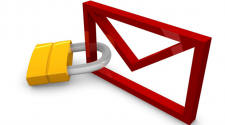Do you know what are the five web design mistakes that negatively affect SEO?

as páginas web de las empresas han evolucionado mucho. De ser web aburridas, con mucho texto y estáticas, han pasado a ser atractivas y muy visuales. El motivo de este cambio es atraer al usuario. Sin embargo, un bonito diseño para el usuario no tiene por qué ser bueno para Google, y puede repercutir negativamente en el SEO”, apuntan desde Seocom, agencia de marketing online, fundada por Ivan ruiz and specialized in SEM services (SEO and PPC).
The main errors in which you fall when designing a web page that negatively affect SEO are, according to this agency:
1. Misuse of headings or headers.
“Los headings or headings are the titles that can be found on a page. They are content with a different typeface than the rest, usually larger and, sometimes, of a different color. They are usually named as H1, H2, H3 ... headings son muy importantes para el SEO, ya que proporcionan a Google información semántica, es decir, de lo que es relevante a nivel de contenido; ayudan en la estructura de información de la web para que Google sepa qué palabras clave son relevantes para el negocio, y ayudan a los usuarios a entender mejor y más rápido de qué trata la web y qué encontrarán en ella. Es importante estructurarlos bien y en orden”.
2. Very heavy images and videos without resizing.
“A la hora de diseñar una web, se considera que se puede subir cualquier imagen, solo porque es bonita, sin tener nada más en cuenta. Sin embargo, esto puede afectar directamente al SEO. Por ejemplo, subir una imagen sin tener en cuenta su peso, afecta directamente a la velocidad de carga de la web, y esto sí que es un factor SEO relevante para Google. Además, resulta un factor muy relevante a nivel de usuario, ya que, si un usuario visita una web y ésta tarda alrededor de 4 o 5 segundos en cargar, muy probablemente, el usuario no entrará en la web. Por tanto, es importante y necesario optimizar el peso de las imágenes y de los vídeos antes de subirlos a la web, para que el if you cargue rápidamente y no se pierda ningún posible cliente por el camino. Para esto hay varias herramientas, como TinyPNG, Kraken.io o Compressor.io, que sirven para optimizar imágenes de forma online”.
3. Little text on the pages.
“Hay muchas páginas web donde el contenido escasea un poco por culpa de tener una gran cantidad de imágenes y vídeos para atraer al usuario. Pero, no sólo hay que atraer a los usuarios, sino que también hay que ‘atraer’ a Google. Por eso, las páginas tienen que tener contenido. El contenido es lo que Google lee para saber de qué trata la página web, por eso es muy importante para que la pueda posicionar. Recomendamos tener un texto acorde a la temática de las páginas, un texto atractivo para que la gente lo lea y se quede en el if you, and that, at the same time, it is an optimized text so that Google likes it and helps to position it. For this purpose, in the first place, it will be necessary to use a good structure of headings. Afterwards, how much headings as the text itself contains keywords (palabras clave) a posicionar y que estén relacionadas. Por ejemplo: si tu web habla de pantalones, emplea las palabras ‘pantalones’, ‘tejanos’, ‘vaqueros, etc. Las imágenes están bien, pero no se debe abusar de ellas ni tampoco poner únicamente imágenes, porque Google necesita el texto para saber de qué trata la web”.
4. A lot scroll (to scroll the pages) to find the information.
“Este punto no afecta tan directamente al SEO, pero puede afectar indirectamente. Si la web no está muy adaptada para la usabilidad del usuario, cuando éste entra, si tiene que hacer scroll y scroll para llegar a lo que está buscando, muy posiblemente se vaya. Esto aumenta el porcentaje de rebote de la página, es decir, el porcentaje de gente que llega y, sin navegar, se va del if you. Éste es un factor muy importante ya que, si para Google se tiene un valor muy elevado en este sentido (es decir, que tu porcentaje de rebote es alto), entonces considera que la web no tiene contenido de calidad y que por eso los usuarios la abandonan. Entonces no ayuda a posicionar, sino más bien lo contrario. En conclusión, que las personas que entren en tu página tengan que hacer scroll está bien, pero siempre pensando en la experiencia del usuario, no en que la web sea muy visual si ello implica poca usabilidad y que, por ende, perjudique”.
5. Abuse of pop ups and interstitial.
“Y, por último, se encuentran las pestañas emergentes, que todos los usuarios odian al entrar en una página web, como es el caso de los pop ups or interstitial. Afectan al SEO porque Google lo que busca es que los usuarios tengan una buena experiencia en las páginas webs que muestra en las SERPs (página de resultados de una búsqueda). Simplemente, porque si Google sólo diese resultados sin más, fueran los que fueran, para todas aquellas personas que utilizan Google, no tendría valor ninguno, y dejarían de usarlo como buscador. Por eso a Google no le gustan mucho las webs con este tipo de ventanas emergentes, porque causa una mala experiencia al usuario. Y si pasa cuando se está con un ordenador, puede llegar a ser aceptable, pero cuando ocurre con un móvil, la experiencia del usuario es realmente negativa, ya que la pantalla es mucho menor. Sí que es cierto que son muy útiles para aumentar las conversiones, pero lo correcto serían pop ups no tan intrusivos, que ocupen un pequeño espacio de la pantalla, no toda entera, que no oculte el contenido de la web… En resumen, que no moleste a los usuarios”.












No Comment